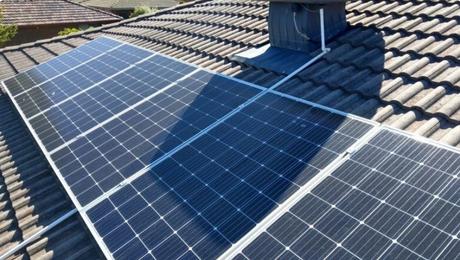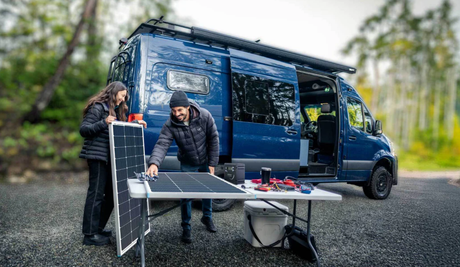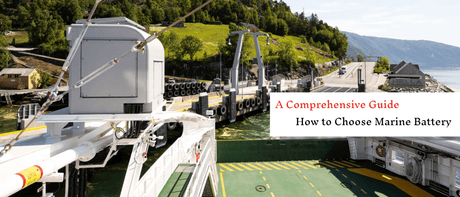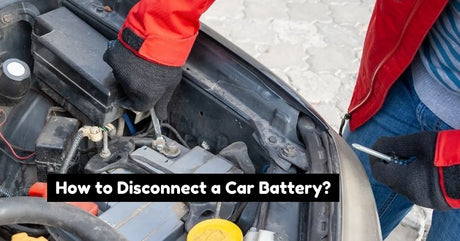Everyone loves to explore the great outdoors, boat, camp, and travel in their RV. But now travelers can add a new layer of convenience and sustainability to their trips with solar panels for RVs.
Table of contents:
- How to Choose Solar Panels for RV?
- How Many Solar Panels Do I Need for My RV?
- How to Hook up Solar Panels to RV Batteries?
- Can a 100-Watt Solar Panel Run a Refrigerator?
- Best Solar Panels for RV
RV Solar panels are an excellent option for travelers who want to go on a greener beak and make their trip more convenient. RV solar panels provide additional electricity while you are boondocking, where charging stations are not available.
From choosing solar panels for running your RV to hooking them up with your RV batteries, this blog post explains how to make a solar RV upgrade successful.
How to Choose Solar Panels for RV?
Setting out on an RV adventure brings many fun experiences, but there also come the challenges of powering an off-grid lifestyle. RV solar panels are an ideal solution – but how do you choose the perfect ones for your camper? Here are the top four things to keep in mind when searching for solar panels for your motorhome.
Determine Your Energy Usage
When selecting solar panels to be installed on your RV, evaluating your energy usage is the best place to start. To do this, make a list of all the electrical appliances and devices in your RV that you plan to use on a daily basis. This can include lights, fans, a refrigerator, a TV, a laptop, a phone charger, etc.
Find the power rating (in watts) for each of the appliances and devices on your list. This information is usually on the device itself, on a label or in the owner's manual. If you can't find the power rating, you can use a wattmeter to measure the appliances.
Estimate how many hours per day you plan to use each appliance or device. For example, you might use your lights for 3 hours per day, your refrigerator for 24 hours per day, and your TV for 2 hours per day.
Multiply the power rating for each appliance or device by the number of hours per day you plan to use it. This will give you the daily energy consumption for each item on your list.
Add up the daily energy consumption for all the items on your list. The result is your total daily energy usage.
Keep in mind that your energy usage will vary depending on factors such as the weather, the time of day, and how many people are using the RV. You may want to add a buffer to your calculations to ensure that you have enough power to meet your needs even on cloudy days or when you have extra guests.

By following these steps, you should be able to get a good estimate of your RV's energy usage and determine how many solar panels you will need to install to meet your needs. Of course, you can also use an online solar calculator to help you determine how much electricity you need, such as Renogy's solar powered calculator.
Or you can find more calculating details in this article How Many KWh Does The Average Home Use?
Mind Your RV Roof Space
The size of your RV's roof must be taken into account when deciding the solar modules you need. High-power smaller panels may be the better option if you’re short on space. For instance, if you’re running on a 200 amp-hour battery setup, consider getting three 200-watt solar panels to output enough energy to charge the battery setup rather than six 100-watt units for the same battery output to reduce your RV’s footprint.
3. Assess Sunlight Levels in Your Area The sunshine in your area is another consideration that must be considered. Unfortunately, not all of us enjoy the same levels of sunshine - so bear this in mind when weighing up the type and number of solar panels for the RV you need. For example, those in Vancouver typically receive much less sunshine than those in Calgary, Alberta and thus need more solar panels.
4. Flexible vs. Rigid Panels Finally, it would help if you also decided between flexible or rigid PV panel types. Flexible solar panels usually come with a shorter warranty and are more expensive, but they can also be more workable and easier to mount on your RV’s roof. Flat solar panels are more durable, typically cheaper, and have a longer warranty; perfect if you’re on a budget.
To choose the right solar panel for your motorhome, consider the factors mentioned above carefully. Ultimately, however – once you find the perfect fit – you’ll be free to explore and enjoy your RVing adventure, knowing you’re covered in powering your off-grid lifestyle.
How Many Solar Panels Do I Need for My RV?
So, how many RV solar panels do I need for my RV? Let's say it all depends on your RV's battery setup capacity.

Generally speaking, most RVs will have either 100-watt or 200-watt panels systems installed on their roofs. Each 100-watt panel can produce an approximate output of 30 amp-hours to your batteries. Therefore, if your battery capacity is 200-amp hours, you'll likely need at least six 100-watt panels (or three 200-watt panels) to cover your energy efficiency needs in the least amount of time.
Also, remember that each 100-watt solar modules can yield 350-360 watt-hours of energy per day. So, one 100-watt panel may charge your 200-amp hour battery setup, but it would take about a maximum of two days for this to happen. This is an acceptable timeframe for some; however, it may not be optimal for others looking for a faster charging solution.
In a nutshell, the specific number of solar modules your RV needs will ultimately depend on their respective energy-storage capacity and the timeframe you desire for your batteries to reach full charge. Either way, there is undoubtedly an option that matches your requirements perfectly!
How to Hook up Solar Panels to RV Batteries?
Are you ready to ditch the grid and explore the world relying on nothing but the sun's power? By hooking up solar panels to your RV batteries, you can start harnessing the sun's free energy and enjoy a sustainable, off-grid lifestyle while traveling! Here are the steps you need to take to make the connection.
Step One: Install the Battery Fuse
Before anything else, you must install the critical battery fuse – this vital component prevents too much current from entering and damaging the batteries. Any short circuit could be highly hazardous without the battery fuse and compromise your RV power system.
Step Two: Install the MPPT Charge Controller
The MPPT (Maximum Power Point Tracking) charge controller is the command center of your RV power system: and it should be installed away from your batteries in a separate compartment. This will help keep the temperatures more balanced and prevent unnecessary overheating.
Step Three: Connect the Components
This is when you’ll need to connect all the power components (batteries, MPPT charge controller, battery fuse) with the correct cables. You’ll have to thread the cables through a drilled cable hole – and make sure there are no pinch points where the cables could get stuck or damaged. Check your manual for instructions to hook up each of these cables.
Step Four: Attach the Temperature Sensor and Bluetooth Chip
Every RV charge controller has a temperature sensor, which communicates the battery temperature and helps your MPPT charge controller decide the optimal charge rate. Insert the sensor into the charge controller and attach the other end of the temperature sensor to the battery compartment. The charge controller may also come with a Bluetooth chip that will enable you to monitor and control the device from the comfort of your smart device via a Bluetooth connection. Plug it into the MPPT charge controller's appropriate port, then screw it somewhere safe near the controller.
Step Five: Running the RV Solar Panels Cables
Grab your drill and drill a hole in the RV roof – to run the solar panels cables through. Next, connect your solar panels using the provided connectors and junction box, then slide the cables through the hole and into the MPPT charge controller. Seal any opening left with a suitable sealant, such as self-leveling lap sealant.
And there you have it: you’ve successfully hooked your solar panels to your RV batteries! Now you can enjoy free solar energy and power your RV stress-free. Here’s a good video resource for this process:
Can a 100-Watt Solar Panel Run a Refrigerator?
So, can a 100W solar panel power a refrigerator? It is possible but it’s wise to go into this venture with eyes wide open and a thorough understanding of your needs. It would be best to calculate the power your refrigerator needs and how many hours it will run each day. After figuring this out, you can determine what size solar panel and battery setup suit your needs.
Let’s break it down with an example. Say the compressor uses 4 amps of power at 12V; you multiply that 4 x 12 to get 48 watts. You must then ascertain how many hours your fridge is running each day. Taking 8 hours as an example, you multiply the watts (48 watts) by the hours it’s running (8 hours). That gives you an energy usage of 384 watt-hours.
With a 100W solar panel generating 350 watt-hours each day, it’s clear that it won’t be enough to keep the RV refrigerator running for 8 hours. This is where the battery takes over and stores energy so that when the solar panel is not charging, the stored energy can keep the refrigerator running.
Best Solar Panels for RV
Are you looking for a reliable and high-quality solar panel for your motorhome? Renogy has you covered! With our brilliant selection of affordable, highly efficient, and durable solar panels for RV – from rigid to flexible – we are your one-stop solution to make your next RV adventure eco-friendly.
Renogy 100 Watt 12 Volt Flexible Monocrystalline Solar Panel

Renogy’s flexible solar panels provide excellent versatility and are made from thin, lightweight, and malleable materials that are easy to set up. Plus, they can work with a non-flat surface, which is an ideal solution for any RV! With high-performance capabilities, you’ll enjoy a clean energy source that’s abundant, reliable, and cost-effective.
On the other hand, if you want a more permanent product, Renogy also offers rigid solar panels. These robust solar panels are built with strong tempered glass and have an excellent performance rate in hot and cold weather conditions. Additionally, they have a corrosion-resistant aluminum frame and can easily be set up and configured quickly.
Renogy 100 Watt 12 Volt Monocrystalline Solar Panel

As solar panels can not feed electricity to appliances directly, you need a complete solar power system including solar panels, power inverters, solar charge controller or sometimes solar battery chargers (usually the 12V battery charger), and solar batteries such as the 12V battery. That’s why you should take a look at solar power kits, hassle-free electricity solutions for most RV owners.
Advice aside, what’s truly remarkable about Renogy’s selection of solar panels is that they are incredibly reliable with an affordable price. If you want the perfect combination of high efficiency, durability, and low cost – Renogy is the right choice. So why wait? Get your RV powered up with renewable energy today and switch to a brighter, more sustainable future.
Related articles:
Solar Panel Maintenance Guide: Practices, Cost, And Frequency
RV Solar Panels: The Definitive Cheat Sheet
How Much Power Does A Solar Panel Produce?










